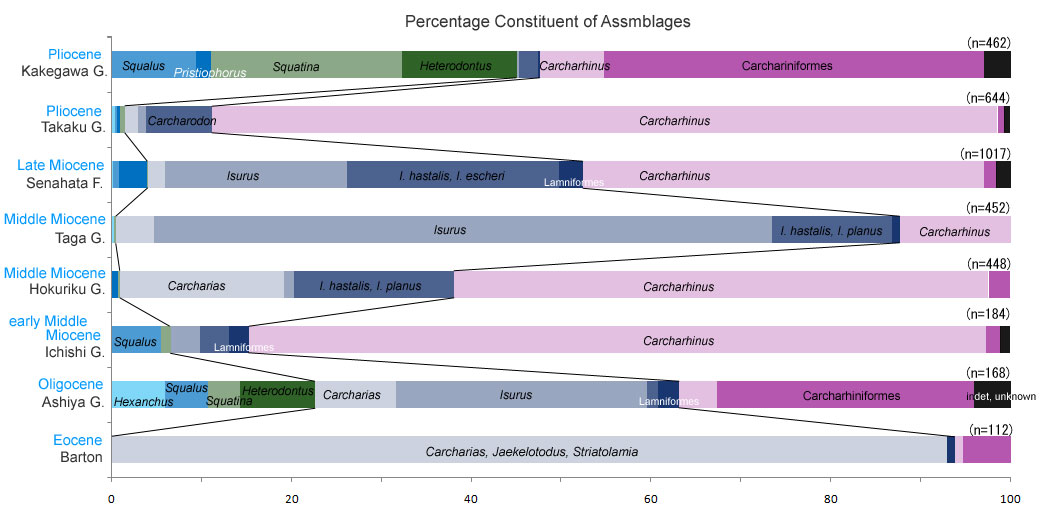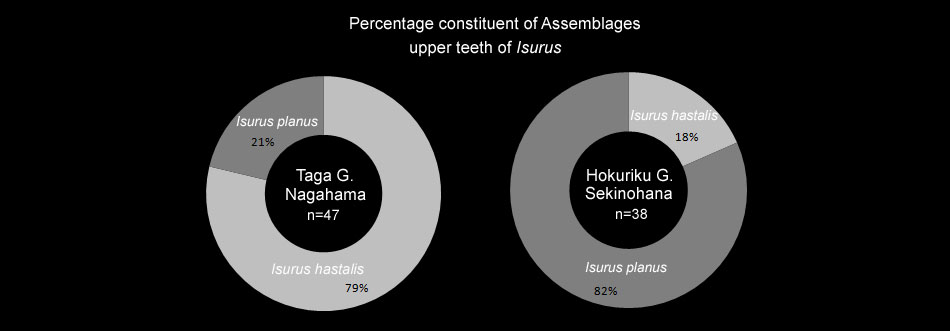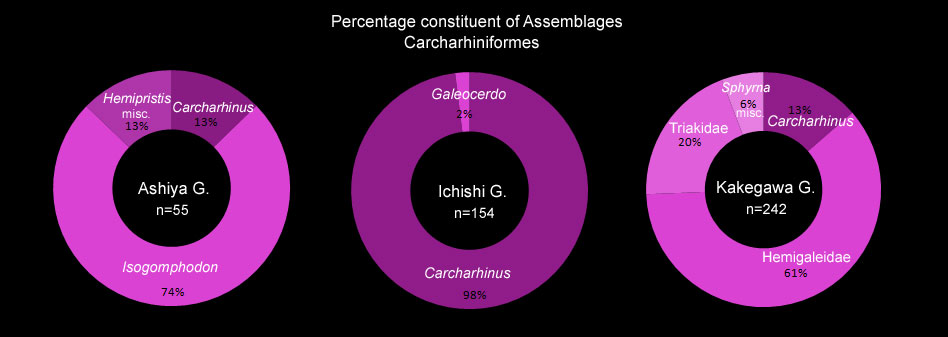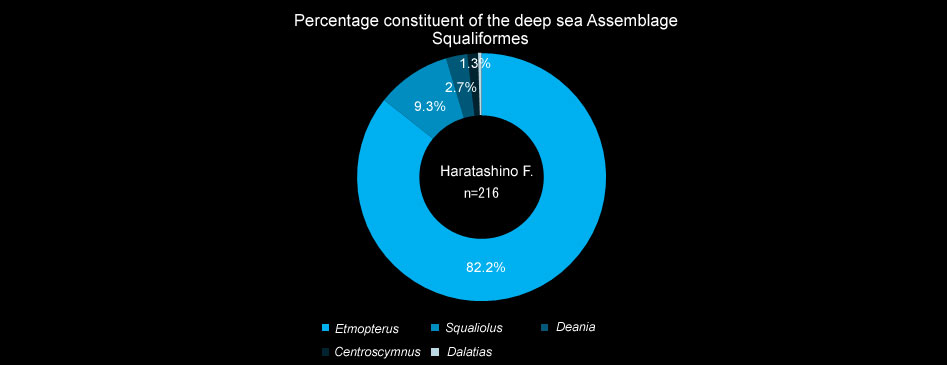| I analyzed fossil shark assemblages from various localities to help understanding changes of Cenozoic shark assemblages. Exhaustive specimen collecting from primary deposits is very much needed for the analysis. Small fossils and fossils which are hard to isolate from matrix lead to less-accurate analysis. Enumerating small fossils is more difficult than those of large fossils because the former are able to collect only from strongly limited amount of fossil containing deposits. For identification of fossils, especially fossils from the Cenozoic era, the anatomy of recent sharks is essential. However sufficient analysis of recent sharks for fossil identification is a daunting challenge, fossil identification and assemblage analysis are attractive to me. Here, I summarized a result of current analysis. |
Component genera/species of assemblages

| Fig. 1. Percentage constituent of assemblages from eight localities. Pliocene: KakegawaG (n=462) Yuke Shizuoka Pref., Takaku G. (n=644) Hirono Hukushima Pref., Late Miocene: Senhata F. (n=1017) Kyonan Chiba Pref., Middle Miocene: Taga G. (n=452) Nagahama Ibaraki Pref., Hokuriku G. (n=448) Sekinohana Ishikawa Pref., Early Middle Miocene: IchishiG. (n=184) Misato Mie Pref., Oligocene: AshiyaG. (n=168) Aino-shima Fukuoka Pref., Eocene: Barton (n=112). |
| I calculated the component distributions of Isurus hastalis and Isurus planus from the middle Miocene of Nagahama, Ibaraki Prefecture and Sekinohana , Ishikawa Prefecture which produce a number of both species. As a result, Sekinohana yields I. planus much more abundant than I. hastalis, while the production from Nagahama is quite the contrary. |

| Fig. 2. Percentage constituent of I. hastalis and I. planus. Nagahama (n=47), Sekinohana (n=38). |
| Among the Cenozoic neoselachian sharks, the ground shark is the richest in variety. I determined the constituent percentage of the ground sharks from three localities which yield a variety of ground sharks. In the Oligocene of Ashiya, the genus Isogomphodon is abundant while the genus Carcharhinus is poor. In the early Middle Miocene of Ichishi, Carcharhinus is predominant. The genus Hemigaleus is prominently found whileCarcharhinus is poor from the Pliocene of Kakegawa, Shizuoka prefecture. |

| Fig. 3. Percentage constituent of the ground sharks. Ashiya G. (n=55), Ichishi G. (n=38), Kakegawa G. (n=242). |
| The deep water assemblage from the Miocene of Haratashino, Gunma prefecture is quite different from other assemblages. The genus Etomopterus is predominant. |

| Fig. 4. Percentage constituent of the deep water sharks. |

| Fig. 5. Percentage constituent of squalids from the Haratashino formation. | Dermal denticles of Centrophorus sp. are more abundant compared to those of other species. |
Back & Forth
20090202